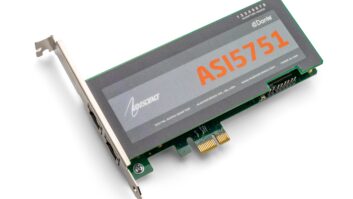
Alan Jurison is senior operations engineer, iHeartMedia Centralized Technical Operations, and the chair of the Metadata Usage Working Group within the National Radio Systems Committee.
This interview is from the recent ebook “What’s Next for Virtualization?” Find it at radioworld.com/ebooks.
Radio World: Alan you said a year ago that you define virtualization as consolidating broadcast functions into a software environment or single-purpose hardware and facility functions at the transmitter site. How is that definition holding up?
Alan Jurison: I think that concept is progressing. Many vendors are actively consolidating functions into existing processes, whether it be hardware or software.
This is a transition that will happen over time. For the most part, a lot of what has occurred in the last year has been in existing hardware platforms we are accustomed to; but looking towards the future, as new platforms are developed, I think we will be able to take what we’ve learned as an industry and consolidate even more functions in the next generation of hardware and software platforms.
RW: You’ve also said that there’s no universal solution for getting stations connected to run air chains completely virtually. How far are we from that?
Jurison: I’ve yet to see a cohesive strategy provided by a single vendor, or consortium of vendors, in this space. I think that’s what it will take for most broadcasters to get started — trusted industry partners to help them accomplish this. Vendors are working in this space, but I still think it’ll be a bit of time before we see an ecosystem — i.e., a “product line” or solution that a station could buy into to accomplish this.
RW: The idea of “air chains as a service” is just so interesting. Will we really get to that point?
Jurison: I think so. As connectivity options at transmitter sites improve and become diverse, there will be stations that opt to consolidate everything into a single service or set of appliances to enable them to do exactly that.
RW: We talked too about connectivity at the transmitter site.
Jurison: The success of these future solutions will live or die with connectivity. IP is competing with traditional RF-based STLs that, when designed properly, have near-perfect uptime.
Finding a combination of reliable and diverse connectivity to the transmitter site is key. Diversity is key. You can’t put all of your connectivity in one basket, i.e. with the same connectivity provider, and the same types of delivery mediums.
I think it is possible to achieve IP diversity at many sites across the United States right now with existing wired and wireless telco infrastructure with different providers. As we move forward, connectivity options will only increase over time, as additional technologies and delivery mediums are offered by IP/telco solutions providers.
RW: Are we farther along now in seeing virtualization come to PPM, to EAS?
Jurison: With PPM, we are already there. With the NAB Radio Technology Committee and Nielsen’s PPM Software Encoder, the major audio processing companies all have solutions that eliminate the need for an external PPM encoder.
With EAS on HD2/HD3/HD4, the industry now has a great solution for including alerts on HD subchannels.
EAS on main-channel AM and FM stations is a bit more involved, as the broadcasting industry needs to have broader discussions with our partners at the FCC and FEMA. I wouldn’t expect much change there immediately. But with the FCC’s recent proceedings on EAS, they are looking at ways to modernize EAS, improve alerting capabilities, and out of that process I think there will be a lot of great ideas that can only help serve the public and communities better than we can today.
RW: What are common misconceptions or unfamiliar terms in virtualization?
Jurison: Broadcasters generally think IP audio and software solutions are not as reliable as hardware and traditional STL. The truth is, given the proper hardware and software design, these challenges can be overcome, and someday IP- and software-based solutions will become more reliable and resilient than traditional broadcast infrastructure because it will have more redundancies built in.
RW: What else should we be considering on this topic?
Jurison: It’s interesting, when we started talking about virtualization a few years ago, it seemed like a good term to discuss the modernization efforts for our industry. As time has gone on, it almost seems the term virtual is becoming outdated.
The IT space has moved away from virtual environments and changing platforms completely to work with cloud-based infrastructure. While the industry doesn’t have a “virtual air chain” today, I think by the time we get to that, we’ll be calling it something else.
We likely won’t call it cloud-based either. What we are heading towards is a completely new ecosystem for our industry, and whatever terms we want to call that today will have a short shelf life. Because the new ecosystem will be rapidly changing to meet the industry’s needs, we won’t have time to sit around and dwell on what we should call it.
Share your thoughts on this or any other article. Write to [email protected].












